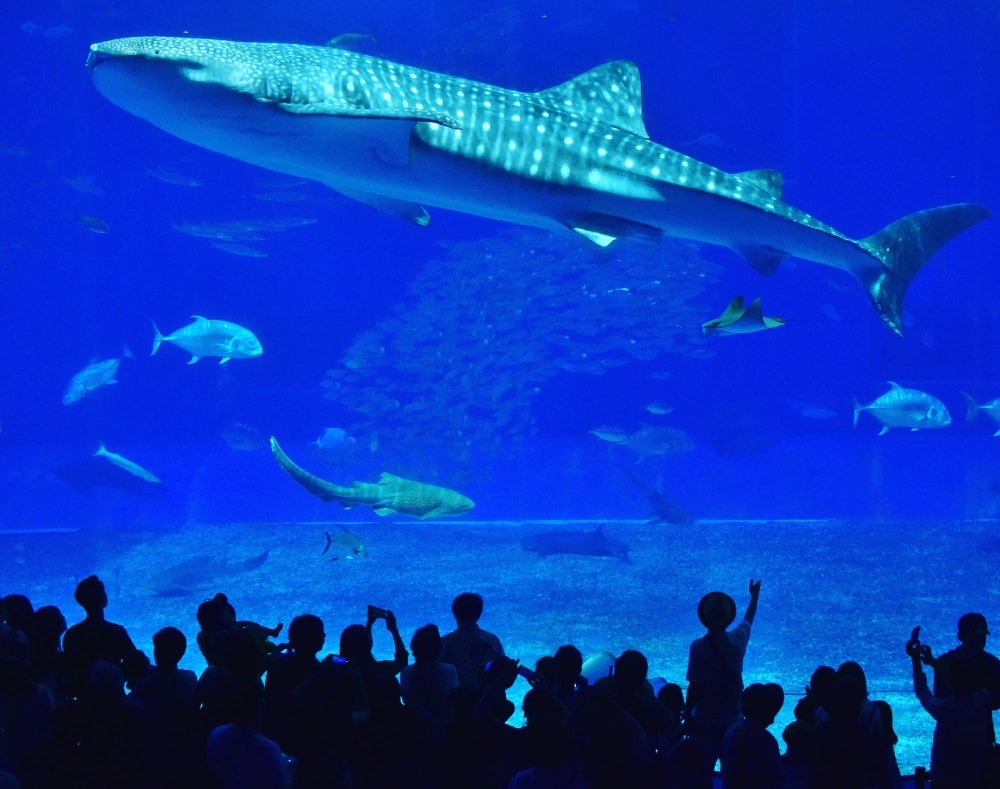Imagine swimming alongside the world’s largest fish — the majestic whale sharks, also locally known as butanding. If you need a visual, just look at the back of your one hundred Philippine peso bills.
While these incredible creatures can grow up to 40 feet long, they are pretty tame, earning them the title of the “gentle giants” of the ocean.
That said, whale shark swimming is an experience that many seek to get close to these peaceful underwater giants.
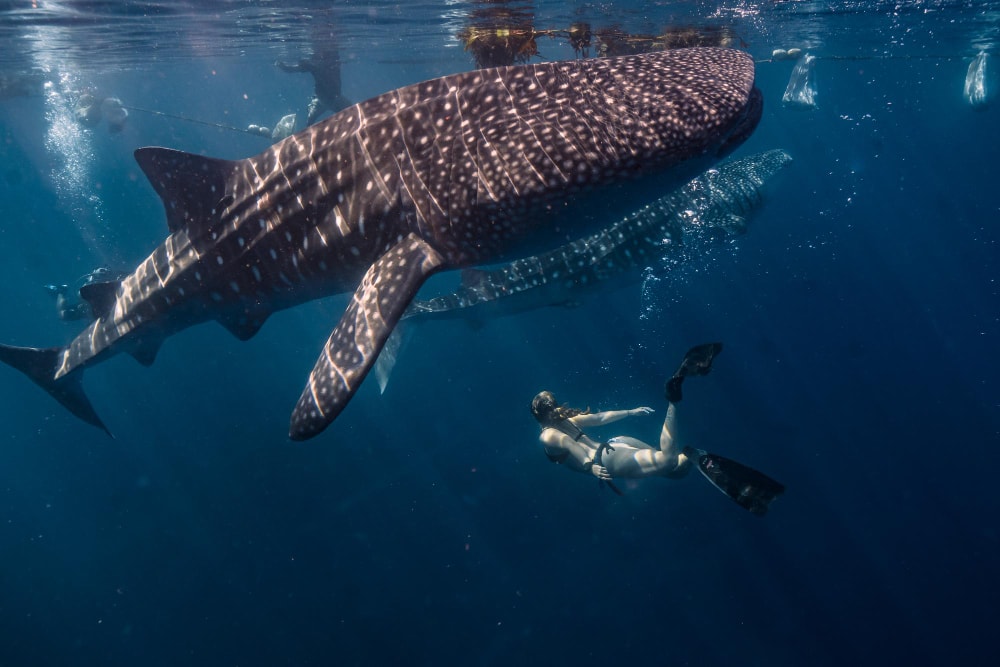
Protecting the ‘gentle giants’
In the Philippines, the opportunity to swim with butandings has become an essential bucket list item for travelers seeking unforgettable encounters with marine life.
But while these magnificent creatures offer you the chance of a lifetime, their status as an endangered species means that we must act to protect them.
The growing interest in whale shark tourism brings much-needed awareness and funding for conservation efforts, ensuring future generations can experience the magic of swimming with these magnificent creatures in their natural habitat.
For tips on where to see these creatures, read on below.
Where to see whale sharks in the Philippines
If you’re dreaming of an unforgettable whale shark experience, the Philippines offers some of the best butanding spots in the world.
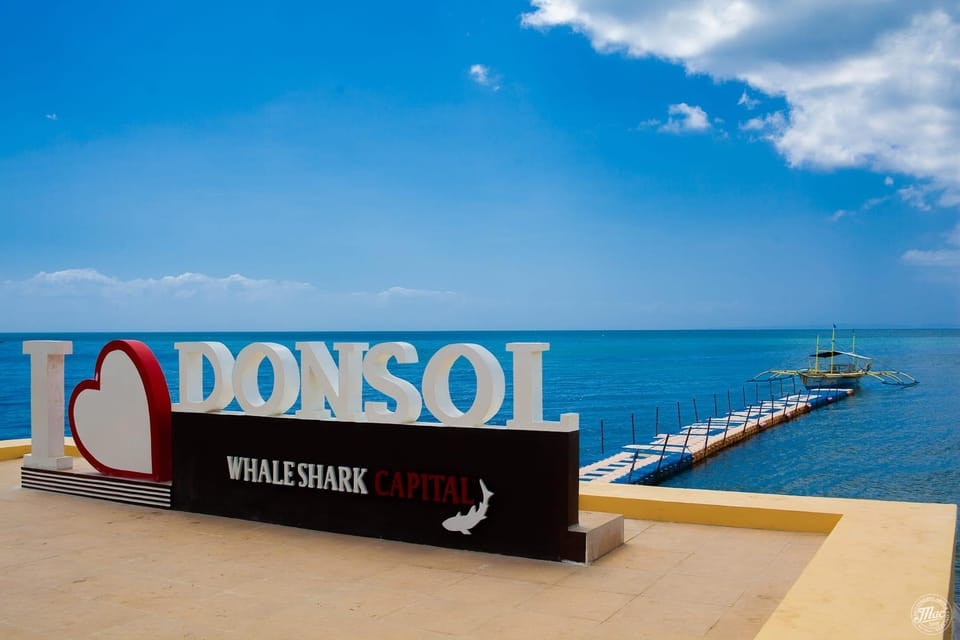
Image source: https://www.getyourguide.com/legazpi-city-l130133/bicol-philippines-donsol-sorsogon-whale-shark-interaction-t635645/
Donsol: The whale shark capital
Donsol is renowned as the ultimate destination for unforgettable interactions with whale sharks, earning its title as the butanding capital of the Philippines.
Located in Sorsogon, the waters of Donsol Bay are home to frequent whale shark sightings.
The Donsol whale shark interaction is truly a once-in-a-lifetime experience, with certified guides ensuring a safe and responsible encounter.
You’ll start your adventure by cruising along the Donsol River before setting out to meet the gentle giants in the crystal-clear waters of the bay.
Donsol’s eco-adventure offerings-beyond the butandings
Beyond whale shark tours, Donsol also offers an array of eco-adventures, such as firefly-watching tours, river cruises, and nearby dive sites teeming with marine life, making it a paradise for anyone looking to connect with nature.
Southern Leyte: Another whale shark wonderland
Southern Leyte Province is a hidden gem for those seeking an exceptional underwater experience during whale shark season. In the pristine waters of Sogod Bay, you’ll encounter vibrant coral reefs teeming with marine life.
It is no wonder that this area is also one of the most biodiverse spots in the Philippines.
Here, butanding encounters are common, which means you’re guaranteed an unforgettable vacation if you want to go whale shark watching.
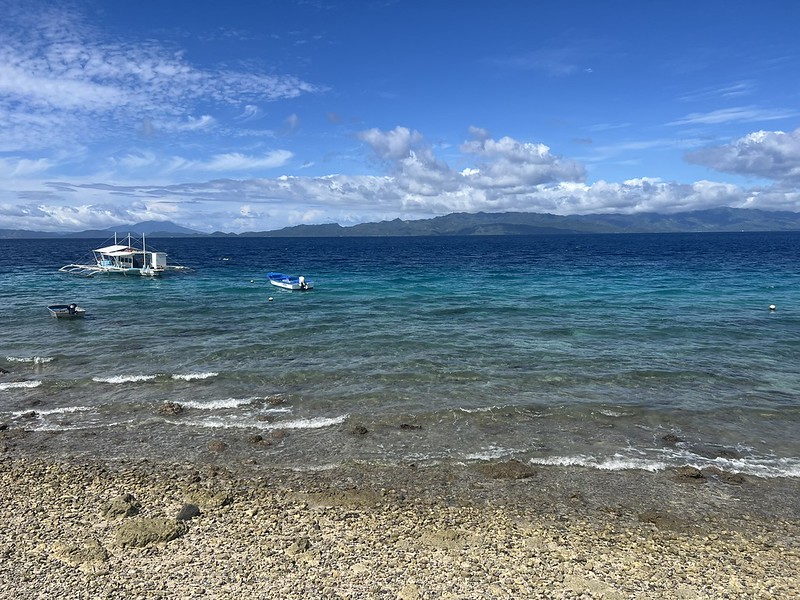
Tubbataha Reefs Natural Park: A UNESCO World Heritage Site
Tubbataha Reefs Natural Park is one of the best places in the world not just for whale shark encounters but for a life-changing diving experience.
Rich biodiversity that provide life-changing diving experiences
As a UNESCO World Heritage Site, it’s renowned for its coral reefs, a high concentration of biodiversity, and of course, some of the best places to swim with the whale sharks in the Philippines.
The area is a also protected site with rich marine life, including vibrant coral reefs and diverse underwater species that makes it a must-visit destination for anyone eager to swim with these majestic creatures.
Tubbataha’s natural wonders are best experienced through guided tours, ensuring you have the chance to encounter whale sharks and other incredible creatures in one of the world’s most incredible ecosystems.
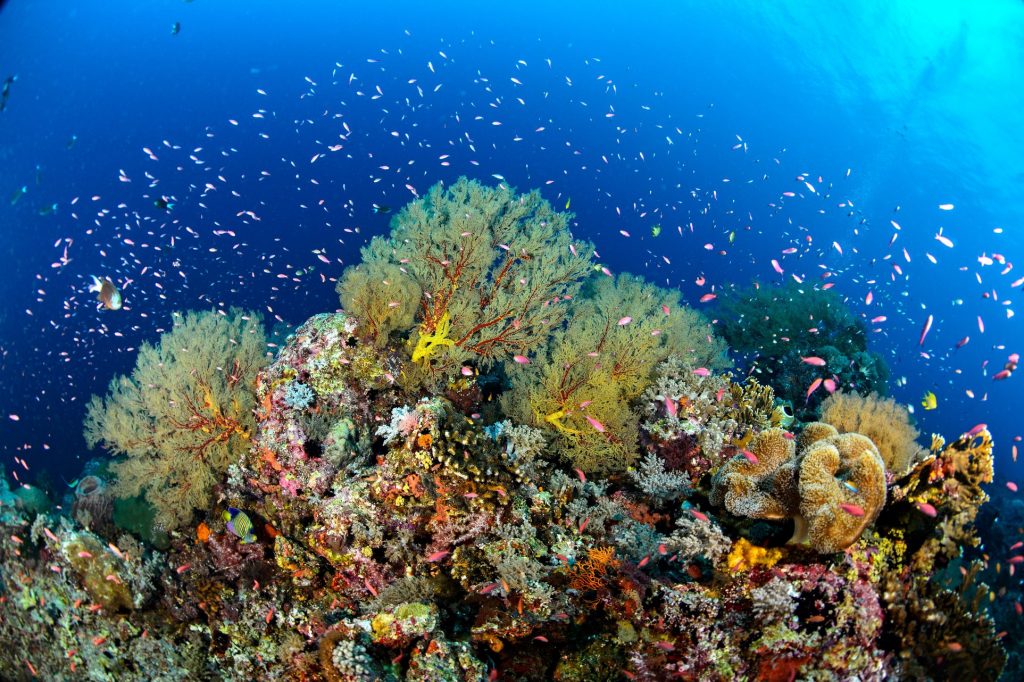
Other locations for whale shark spotters
While Donsol is famous for its whale shark sightings, there are other incredible locations in the Philippines where you can swim with these gentle giants.
Puerto Princesa
Located on Palawan Island, offers an unforgettable whale shark experience, especially in Honda Bay, where you can swim with whale sharks while surrounded by stunning marine biodiversity.
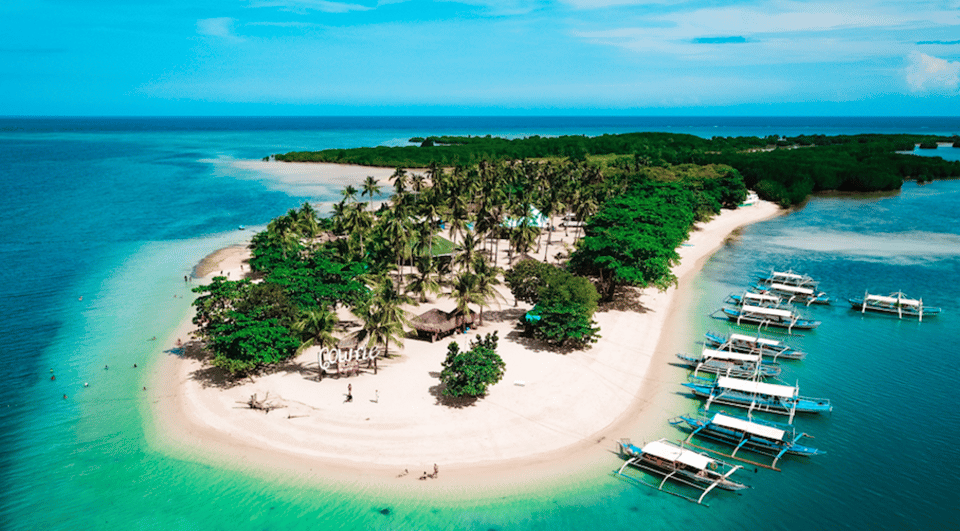
Image source: https://www.getyourguide.com/puerto-princesa-l1000/palawan-honda-bay-island-hopping-cruise-t627519/
Cebu Island
Another fantastic destination known for its crystal-clear waters and vibrant coral reefs, providing excellent opportunities for whale shark swimming. Oslob, in particular, is a famous spot for those who want to snorkel with the butandings.
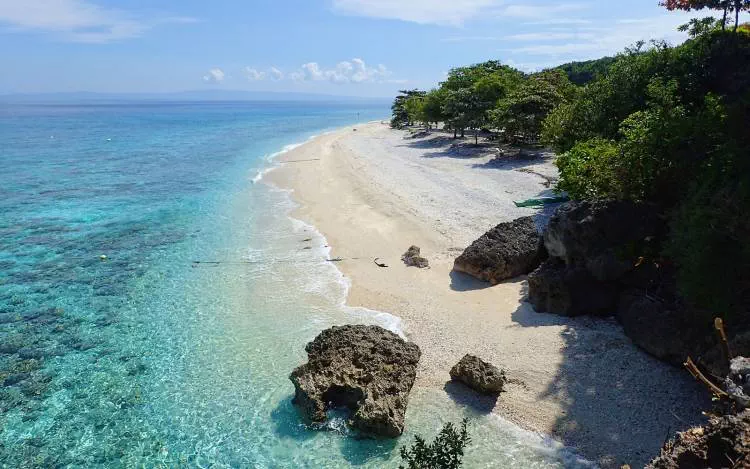
Image source: https://www.worldbeachguide.com/philippines/sumilon-oslob.htm
Bicol Region
If you’re looking for a more off-the-beaten-path experience, the Bicol Region offers lesser-known spots with incredible whale shark encounters.
However, whale shark watching in the area has been temporarily suspended due to people feeding the whale sharks, which disrupts their natural path.
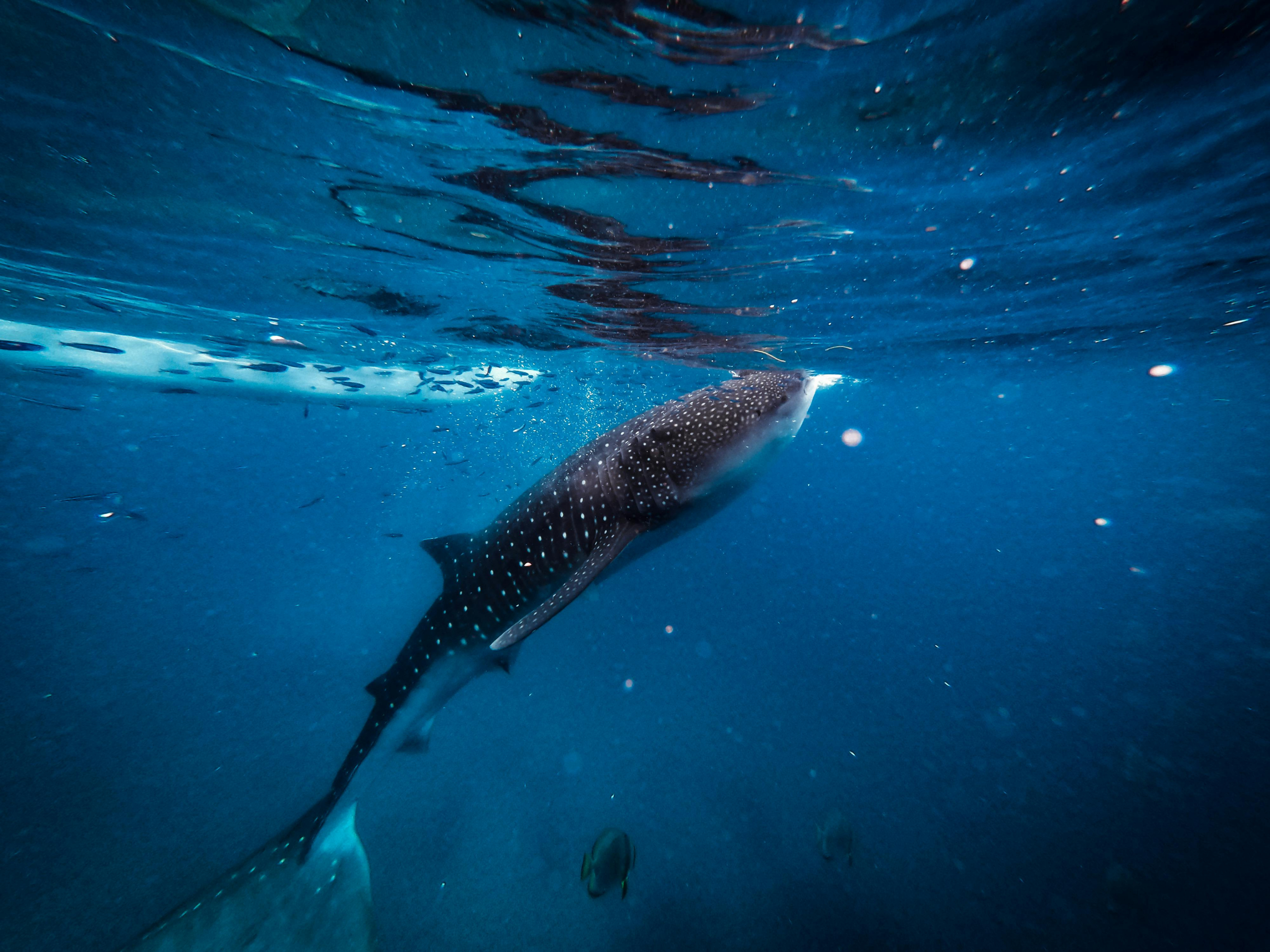
Whale shark season in the Philippines
If you’re planning to swim with whale sharks in the Philippines, timing is key.
There are whale shark sightings across the Philippine waters from November to June, but if you want multiple sightings in a day, February to May is the best time to schedule your trip.
During this period, the likelihood of whale shark encounters is at its highest, especially in regions like Donsol, Southern Leyte, and Tubbataha.
The whale shark population in these areas tends to congregate as they feed on the abundant plankton. While sightings are never guaranteed, the chances of encountering these majestic creatures are very high, particularly if you visit during peak season.
For the best time to visit each area, you would want to coordinate with local tour operators who can also guide you with guided tour availability.
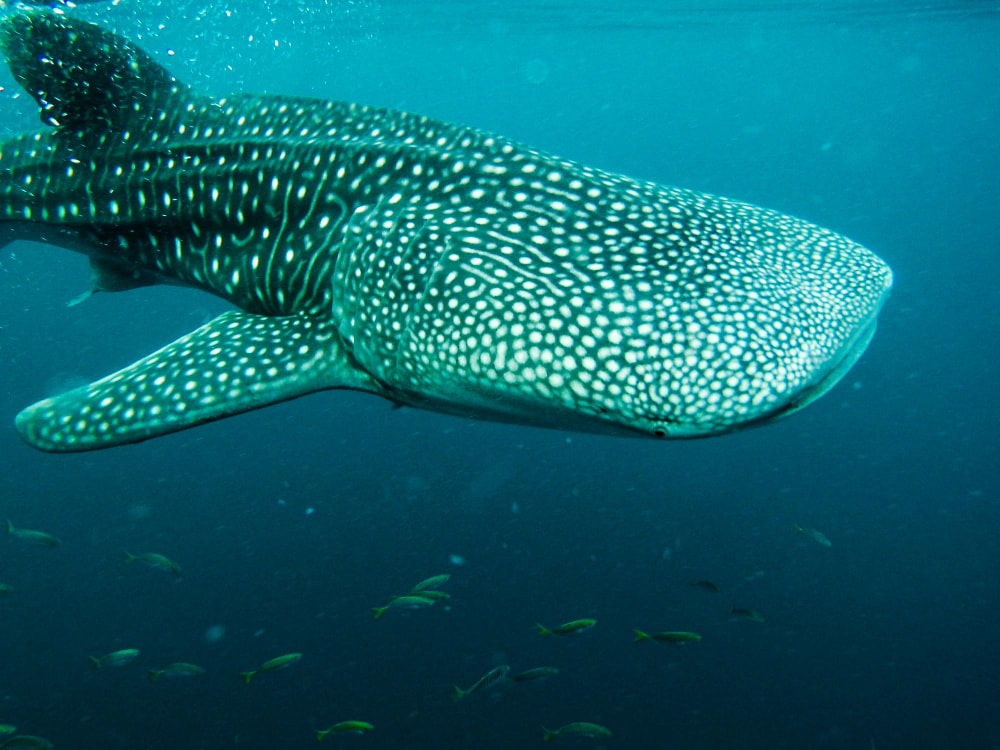
Responsible whale shark tourism
When swimming with whale sharks, it’s important to practice ethical tourism to help protect these wild creatures. Responsible whale shark tourism starts with respecting guidelines.
The rules may vary, but here are some of the things you can and cannot do when swimming with whale sharks:
DOs
Book with a certified operator: Choose tour operators that follow ecotourism guidelines and prioritize the well-being of whale sharks.
Listen to the guide: Always follow instructions from your boat crew and guides to ensure a safe and respectful interaction.
Maintain a safe distance: Keep at least 3 meters (10 feet) away from the whale shark’s body and 4 meters (13 feet) from its tail to avoid stressing or harming them.
Swim calmly and respectfully: Move slowly and avoid splashing to prevent startling the whale shark.
Wear eco-friendly sunscreen: Use reef-safe sunscreen to protect marine life from harmful chemicals.
Observe and appreciate: Take in the beauty of these creatures without disturbing their natural behavior.

DON’Ts
No touching: Never touch, ride, or hold onto a whale shark; this can stress them and damage their protective mucus layer.
No flash photography: Flash can disorient and stress the whale sharks. Use only natural light or camera settings that don’t require flash.
Don’t feed the whale sharks: Feeding disrupts their natural migration and behavior, leading to long-term harm.
No blocking their path: Always stay to the side and avoid swimming directly in front of the whale shark.
Don’t chase or disturb them: Let the whale sharks move naturally; do not try to grab their attention or alter their direction.
Avoid using harmful gear – Fins, snorkels, and life vests should be used responsibly to avoid injuring the whale sharks. Motorized underwater propulsion is also heavily discouraged around whale sharks.
By following these rules, you’re directly supporting conservation efforts of the local governments aimed at safeguarding the whale shark population.
These ensure that whale shark interactions are both safe for the animals and sustainable for the region.
While whale shark tourism helps boost the local economy, it is important to be a responsible traveler and make a significant difference in preserving these magnificent creatures for future generations.
